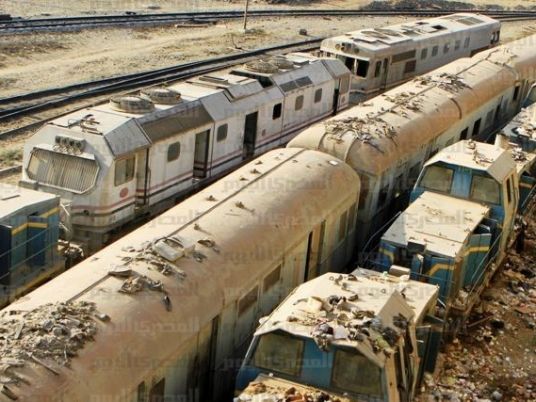
To many who are not familiar with the capital of North Sinai, Arish could seem like nothing more than a place where bombs drop and militants shoot RPGs at the military. The city, however, has a rich history and even once an important stop on Egypt's railway system.
The station lies on the main street in the city called al-Bahr and lies in shambles due to lack of renovation.
Ishaq Gamil al-Sabbagh, who has been living near to the rail stop almost around the time of its construction in 1963, has heard of the old stop from locals for almost 50 years. “The length of the platforms reach around 500 m and the width of the railways side-to-side reached 50 m. It was huge. The train used to come from Cairo passing by Be’r al-Abd and Arish, reaching Gaza. It used to be loaded with everything including equipments, supplies, citizens and others,” he said.
“In 1967, I used to live near to the station. I witnessed Naksa Day, when the Israeli aviation striked all the trains and Egyptian military sites here. Israeli missiles did not leave one train in good condition in the stop. Hundreds of soldiers were killed here. I quickly left the place with my sons and lived in a house in Arish city for three days. We returned back then and found the bodies of the soldiers everywhere. We brought a cart to carry the soldiers. We buried them in many places like Sahel al-Bahr and tombs of Arish. It was a painful scene in the stop which saw hard historic incidents,” he added.
“After Naksa Day, the train no longer came to Arish, especially after striking the train that used to transfer the Kuwaiti soldiers who came to support Egypt. The railway was blocked. Israelis stole the railways and cut them into separate parts,” he said adding that this caused the complete stop for the trains. “After the great victory in October war, the train stop followed the railway lines department of Zagazig in Sharqia. The residents then took control of big part of the station land and built their houses. A sovereign authority then took control of a part of the buildings and the land and placed a sign with the name of the authority, which is still there. The remaining part in still unused by anyone,” he added.
Ishaq added that the remaining part is totally abandoned. “Thieves stole the doors and windows and broke parts of the concrete to get the steel,” he said.
Edited translation from Al-Masry Al-Youm




